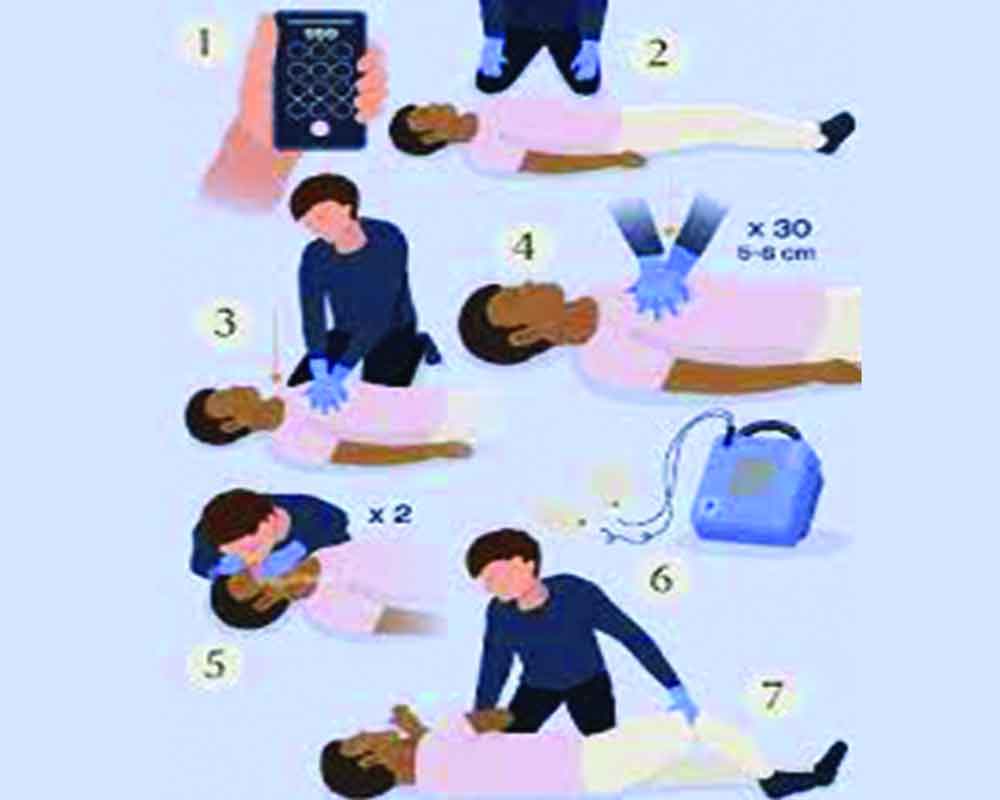Delhi is taking notable steps in public health care by planning to instal AEDs in public spaces
In a commendable move to reduce fatalities caused by sudden cardiac arrest, the Delhi Government proposes to place heart care devices in public places across the city. Automated External Defibrillators (AEDs) are to be placed in crowded areas like railway stations, bus stations and markets. These portable AEDs are easy to handle even by the general public with minimal training. The idea is to stabilise the heart of the person suffering a cardiac arrest till the ambulance arrives. In a sudden cardiac arrest, the heart’s electrical system fails, and it unexpectedly stops pumping blood. This produces abnormal heart rhythms and the pulse rate increases rapidly. If an AED is immediately available, it can deliver electrical shocks and restore the heart’s normal rhythm. This is called defibrillation. But time is of the essence. A cardiac arrest can degenerate into death within seven to 10 minutes. An AED must therefore be used in time, and effectively. In India, 10 per cent of all deaths are caused by sudden cardiac arrests as patients await ambulances or reach late to hospitals. In this context, the Delhi Government’s move is path-breaking. In the United States and Europe, the policies allowing AEDs in public places were implemented only after the turn of the century. Today, millions of these devices exist in these countries. All ambulances have them. So do most public transport systems. Having AEDs in the homes of high-risk cardiac patients is now being considered.
The Delhi Government must note that software developers abroad have developed apps that help people locate these devices. Access to such a database is a necessity if the AEDs are to be of help in emergencies. Once this programme extends beyond Delhi, we will also need people trained in CPR (cardio-pulmonary resuscitation) to sign up as medical volunteers who can be located on apps. The key element of the proposal is training people to use the AEDs. Even before placing the devices, the Delhi Government’s health department and city hospitals must team up to carry out large-scale awareness campaigns and organise training camps for the general public. The ambulance services spread across the national Capital should be linked to a common database. The Government must be sensitive to some of the issues involved in placing the AEDs in public places. The first one is easy. They should be placed in crowded areas that have a high chance of out-of-hospital cardiac arrests. The AEDS are needed in large residential areas as well, especially those far away from health centres. These are of critical importance in slums and unauthorised colonies where the poor live and where cardiovascular disease causes the maximum number of premature deaths. Finding locations in such slums will be a challenge unless Government schools or police stations are chosen to host these devices. The proposal needs a lot of coordination between the Government and the public to be a success.


























